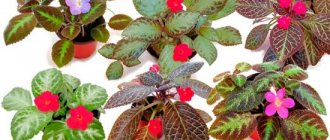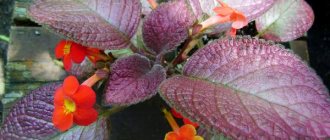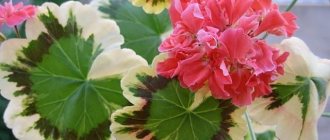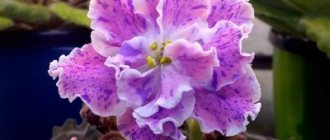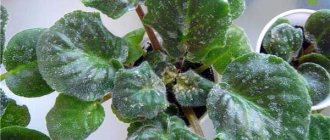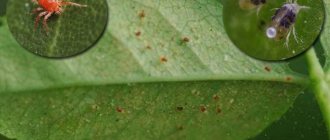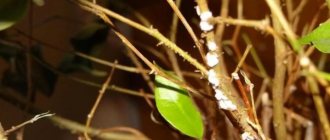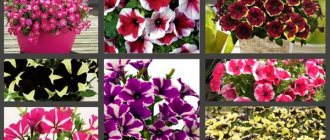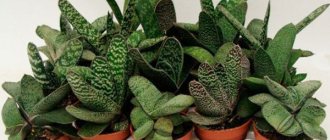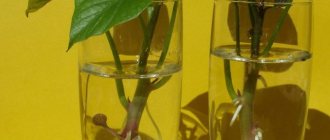Introduction
The eye-catching plant has long been noticed and studied far and wide by both scientists and amateur gardeners.
The first called the unusual flower episcia - lilac, creeping, copper, dotted, carnation, and the indigenous inhabitants of the American continent, ignorant of sophisticated scientific names, with the plant’s native climate, gave episcia such wonderful names as violet flame, orange violet, African violet , a peacock flower and even a chameleon plant.
Continuous selection periodically presents new varieties, and often amazes with the invention of completely unique leaf colors , from chocolate to silver, from crimson to purple, from light green to pearlescent.
This touching plant, covered with the most delicate leaves, does not leave you indifferent with the enchanting beauty of its flowering - multi-colored, delicate, bright buds scatter against the background of patterned leaves, and delight with the long-term extent of its flowering , approximately starting in March and lasting until mid-November.
Characteristics of episcia types
Root system: fibrous, medium developed.
Stem: soft, thin, long or short with densely spaced leaves, creeping.
Important: Episcias are cultivated as hanging flowers, suitable for life in hanging pots, precisely due to the formation of long shoots after the stem has drooped, hanging over the edge of the pot.
Leaf blades: finely crenate along the rim, oppositely located, rather large, densely pubescent, with a shiny/matte/smooth surface; the color palette is very diverse, and rarely green.
Leaf Shape:
- Elliptical
- Broadleaf
- Broad-ovate
Important: a distinctive feature of episcias is the crazy variety in leaf colors. The emphasis is rarely placed on the green color of the leaves, although its unique speckled patterns in shades of marsh and light green look no less magical than golden tiger with brown, or dusty pink with thick scarlet pubescence.
Flowers: axillary “gramophone” 3 x 2 cm; in shades of scarlet, orange, lavender, blue, cream, yellow and pink (for example, episcia copper); rarely – speckled; each flower has 4 stamens; single; tubular.
Varieties of episcia
Today, several species and hybrids of episcia are known. Each variety is distinguished by its inflorescence color and leaf size. A common type for indoor growing is considered to be copper plant.
This species was introduced from Colombia at the beginning of the 20th century. Its leaf blades have a soft brown tint. They are strongly lowered. Their surface is decorated with white fluff. There is a pattern of white lines along the edges that create the illusion of a grid. The photo of the epic shows this plant variety.
Episcia silver beauty or forest beauty has wide leaf blades. They are smooth and soft to the touch. Their color is silver, and the flowers are made in the form of bright scarlet bells.
Episcia "Chocolate Soldier" is considered the most flowering species of ornamental plants. Its leaves are made in the form of an oblong oval. They have a brown-green tint. The flowers are made in the form of burgundy bells. Inflorescences can combine from 3 to 5 pieces on their stalk.
Creeping Episcia was brought from hot Brazil. This hybrid has huge flowers and wide leaves that combine black and green shades. Their surface is decorated with a pattern of silver veins.
This species has an unusual but interesting appearance. Hot Mexico is considered the birthplace of the tropical flower. The leaf plates are made in the form of an oblong oval. They are permeated with an invisible pattern of light lines.
The flowers are large in size and snow-white in color. The edge of the flower is decorated with a thin fringe. Growing this variety at home requires professional knowledge and experience.
Varieties and names with photos
| Type of epic | Leaves | Flowers |
| Dianthiflora episcia dianthiflora | Oval, pubescent, in shades of green | White, tubular, carnation-like |
| Type of epic | Leaves | Flowers |
| Creeping episcia reptans | Hairy, silver-green | Carmine, edged with fringe |
| Copper-red episcia cupreata | Elliptical, large, brown to copper | Yellow corolla, red spots |
| Type of epic | Leaves | Flowers |
| Chocolate soldier episcia chocolate soldier | Brown-green, silver-blue dots | Dark burgundy |
| Type of epic | Leaves | Flowers |
| Forest beauty episcia silvans beauty | Glossy, in shades of silver | Carmine, red |
| Type of epic | Leaves | Flowers |
| Northern lights episcia northern light | Glossy, pearlescent shimmer | Reds |
| Silver shine episcia silver sheen | Hairy, shades of silver, edged with green or brown stripes | Orange-red |
| Type of epic | Leaves | Flowers |
| Lilacina viridis | Large, pubescent, finely toothed, emerald green, with a scattering of silver veins | Lavender, lilac, with white rim |
| Kee wee | Large, rough, shiny, with a brown coating | Orange-red, yellow throat |
| My precious | Large, glossy, lumpy, green-light green, with pearlescent veins | Yellow, lightened edge |
| Type of epic | Leaves | Flowers |
| Yellow mist | Large, smooth, with silvery pearl scattering along the veins | Bright yellow |
| Type of epic | Leaves | Flowers |
| Gray lady | Hairy, medium, jagged, in olive shades | Red, orange, yellow polka dots |
| Silver dust | Medium, dark, olive green, with contrasting mesh veining | Carmine, orange, edged with a light rim |
| Type of epic | Leaves | Flowers |
| Faded jade | Light green, with pearlescent coating along the central | Orange-red, yellow throat |
| Сhocolate cream | Chocolate brown with wide pink veins | White, fringed edges |
| Type of epic | Leaves | Flowers |
| Silver skies | Miniature appearance, in shades of green, with a crimson tint | Carmine |
| Tiger stripe | Swamp shades, with veins similar to the pattern of tiger skin | Scarlet |
| Type of epic | Leaves | Flowers |
| Pink acajou | Medium, finely toothed, silver-green, with random pink splashes | Carmine |
| Type of epic | Leaves | Flowers |
| Moon light | Light silver, with brown-pink edge | Reds |
| Sun gold | Small, olive, with brown tones, shiny, herringbone | Bright yellow |
| Type of epic | Leaves | Flowers |
| Butternut | Light green, with brown spots, young leaves - pink shades | Reds |
| Type of epic | Leaves | Flowers |
| Spring symphony | Glossy, large, dark olive | Orange, jagged edges |
| Aloha mauna loa | Round, hairy, dark brown tortoiseshell color | Orange-red |
| Type of epic | Leaves | Flowers |
| Pink Panther | Hairy, dark green, herringbone pattern | Hot pink, jagged |
| Type of epic | Leaves | Flowers |
| Country kitten | Small, embossed, chocolate-colored, with silver-pink veins | Red-orange |
| Sea foam | Round, pubescent, raspberry-pink in color, with a pink border and an olive stripe | Orange-red, yellow throat |
| Type of epic | Leaves | Flowers |
| Veronica's hair | Cherry, with mother-of-pearl insert | Scarlet |
Variety of species
Chlorophytum flower - types and varieties of plants
The ornamental plant is loved and grown in different countries, so a large number of its hybrid species have been bred. Each variety surprises with its beauty and uniqueness. At the same time, the simplest natural species does not lose its position and continues to be popular among gardeners.
Episcia Tiger Stripe
Tiger stripe or Striped Tiger is an unpretentious species, tolerates low light and dry air, and grows quickly. The leaves of the tiger flower are large, dark green, strewn with pronounced silver veins, have a marbled appearance, and are covered with a light mother-of-pearl fluff on top. Flowers of a bright red rich hue.
Tiger Stripe
Episcia Northern Lights
Episcia Northern Light or Northern Lights has very decorative foliage and shoots are often strewn with shoots and rhizomes. The leaves of this species are large, glossy, but have a slight edge, densely cut with veins.
The variety was named due to the color of the foliage. Their color changes from the center to the edges and depends on the lighting. Main shades: from pink-pearl in the center, to dark pink, lilac, deep burgundy, violet and ending with a wide chocolate border. The flowers are orange-red.
Episcia Emerald Velvet
Emerald Velvet or Emerald Velvet is also a very beautiful variety. The bush grows compact with medium-sized leaves. The appearance of the leaves justifies the name of the flower. They are covered with fluff, and black spots on dark emerald green create a velvety tone that you want to taste by touch.
Interesting! The flowers are tubular in shape with five round petals, single with a double edge. The color of the flowers is very delicate white-blue or light lilac.
Episcia Silver Skies
Silver skies or Silver sky is a miniature variety. It grows into a small lush bush. The leaves are small, 2-3 cm in size, shiny, with a slight edge. The color of the leaves is very unique - the silver-green core is covered with a fine network of vessels and bordered by a dark olive carved stripe. The flower is bright scarlet, tubular.
Silver skies
Episcia Blue Nile
Blue Nile or Blue Nile is a large flower that has large flowers and leaves. The leaf length is 12 cm and the width is 8 cm. The leaves are thick, soft and velvety, slightly curled inward. They also have a very interesting color: it seems that an emerald-silver Christmas tree is glued to the dark olive base in the center of the sheet. The flower, whose diameter is about 6 cm, is a romantic lavender shade with a cream or yellow neck. It consists of five petals with wavy edges.
Important! Blue Nile is demanding to care for and only under favorable conditions will delight you with large and beautiful flowers.
Blue Nile
Episcia Strawberry Patch
Strawberry Patch translates as strawberry patch. Its leaves are bright pink with silver veins. The color of the leaf is uneven, it goes from pink to red, crimson and with a metallic tint. Like other varieties, the leaves are cut with veins and covered with a small edge. The flower size is medium, carnation-flowered. The flowers are orange-red with a yellow center.
Strawberry Patch
Jim's Red Trail Episode
Jim's Red Trail or Red Trail is a small, compact bush, unpretentious, fast-growing, and not greedy for shoots and rhizomes. Episcia leaves never cease to amaze with their variety and combination of shades and delight with their beauty. Jim's Red Trail is dark brown with red or pink streaks. The shape of the leaves is almost round, only the end is pointed, the edges are carved. The shade in the center of the sheet is more saturated, almost black, and becomes lighter towards the edge. The jagged edge of the leaf is completely pink. The flowers are tubular, orange-red or bright red with a yellow center.
Jim's Red Trail
Episcia Silver Sheen
Silver Sheen is bred on the basis of Copper Episcia; its leaves are large and covered with fluff. The pattern of the leaves is so unusual that it is even difficult to describe. The main color is green, but it is almost invisible behind the huge number of large and small veins of silvery-light green color. The edge of the leaf is brown or dark olive. Closer to the edge there are dark brown or purple spots, like a panther's, and in the center of the leaf there are no spots at all.
Important! Flower growers recommend not watering this variety with cold water, only at room temperature, otherwise its reaction will be immediate: the leaves will be covered with brown painful spots.
The flowers of this species are also orange-red.
Episcia Strawberry Mist
Strawberry Mist - the epitome of Strawberry Mist translates as strawberry mist. The flower belongs to the same species as Strawberry Patch, and has juicy and rich red-raspberry leaves with pearlescent tints and a silver-green network of veins. The flowers are orange-red with a yellow throat, the bush is abundantly strewn with them, but against the background of red leaves they are almost invisible.
The plant's shoots grow slowly compared to other species, but they grow long with frequent rosettes of medium-sized leaves.
Episcia Raspberry Blush
Raspberry Blush is a raspberry blush. Another handsome plant from this family with very large, downturned, embossed leaves. The leaves have no edges at all; they are smooth, glossy, with a dazzling pearlescent sheen. The color is green-brown or dark olive.
The crimson blush appears in the veins that abundantly cover the leaf, especially in its center, and on the underside the leaf is completely crimson. The blush also appears on the flowers. On a thin tubular stem, five petals are located overlapping each other, the same orange-red color as most episcias, with a yellow center. However, towards the edges the petals acquire a crimson tint.
Raspberry Blush
Episcia My Precious
My Precious translates as my charm. It has very large, 20-25 cm long, embossed, shiny and smooth leaves on fairly short stems. Their color is emerald green with silver veins, with the center almost entirely silver-gray and the edges green.
It produces very few shoots, but it blooms almost all year round with small yellow flowers. Closer to the center, the color of the five rounded petals becomes more saturated, and fades towards the edges; there is also an orange rim in the middle.
My Precious
Episcia Sea Foam
Sea Foam, or Sea Foam, is a large, profusely flowering variety with large leaves. The color of the leaves, like most species, changes from one shade to another, delighting with its beauty. Sea Foam leaves are gray-green in the center, this color turns into crimson towards the edges, and the edges themselves are already chocolate. The main vein in the center is silver-olive. The shape of the leaf is round with a sharp tip, the edge is weak, and there is a pearlescent sheen. The flowers are again orange-red with a yellow center.
Sea Foam
Episcia Aloha Mauna Loa
Aloha Mauna Loa is a new addition to plant breeding. It welcomes medium-sized, dark green leaves with soft pink veins, becoming increasingly pink toward the edges. The edge is weak, the surface is pearlescent and shiny. Flowers are red, five-petaled.
Important! It is characterized by rapid growth and abundant flowering.
Aloha Mauna Loa
Episcia Yellow Mist
Yellow Mist, or Yellow Fog, has leaves of an extremely juicy and rich green color, and only the pearly center and the mesh of veins slightly muffle this riot of greenery. Their texture is tuberous, there is no edge, they are glossy and sparkling. The flowers are smallish with jagged edges, yellow in color. The variety grows quickly and with proper care can bloom almost all year round.
Episcia Lilacina Viridis
Lilacina Viridis translates to lilac green. The plant is bushy, strongly vining, with lilac flowers and rich green leaves, which seem festive in a bright emerald outfit with a string of pearls in the center. If you look closely, you can see a very thin brown line along the edge of the leaf.
The flowers are very delicate, light, lilac-lavender shades, turning to white towards the center, and in the very neck there is a yellow spot. The leaves and stems of the plant are fluffy and velvety.
Lilacina Viridis
Episcia Ronnie
Ronnie is a compact bushing plant with very large leaves up to 20 cm, abundantly overgrown with layering, which quickly takes root and takes root well. The leaves are dark green, marsh or brown with a light green center and gray-pearlescent veins and specks. The coral-red flower against the background of dark greenery looks very impressive.
Decorative flower leaves
There are a great many types of episcia, and they all have decorative leaves of incredible beauty and color. Having seen the beauty of each variety, it is difficult to make a choice and you want to admire each of them in your home. In addition, this indoor flower is unpretentious and does not require much effort in care.
Episcia care
Lighting
Preferably a bright room, 12-16 hours of daylight, no direct sunlight.
Air temperature and humidity
Heat-loving episcia loves moderate temperatures and high air humidity; its homeland is shady tropical forests.
- Night: +18С/+25С
- Day:+24С/+26С
- Winter: not lower than +15C
- Summer: no higher than +33C
Watering
Moderate, only with settled water, and drain excess liquid from the pan an hour after watering.
Transfer
It is recommended to replant the episcia annually in early or mid-March, provided that the entire native soil for the plant is filled with the root system, and individual root branches protrude outside the pot holes.
Important: Episcia will bloom only when the root system has completely colonized the soil of the pot, and not earlier.
Landing location
Depending on the species, epicia prefers planting in wide and low pots that meet the needs of specific root systems.
Accordingly, for more sprawling and large-leaved species, the container is chosen to be much larger than for dwarf species.
Soil selection
In the soil for epistation, increased air permeability and lightness are required, with a pH of approximately 6.0. It would be a good idea to enrich the selected soil with fine charcoal.
Tip: To make it easy for water to penetrate to the roots without causing oversaturation and rotting, be sure to dilute the bottom layer of soil with pebbles, or add drainage.
Top dressing
In summer, every fourteen days. It is worth choosing mineral complexes and fertilizers rich in organic matter, and preparing them, reducing the proposed norm to half a serving.
Here's some advice from professionals:
Correct bush formation
Forming a charming bush from the plant does not cause any difficulties. Following this desire, you need to plant the plant in a wide pot, but better - in a shallow one, and lightly sprinkle the young shoots with soil, pulling them to the ground.
You won’t have to wait long - the plant will quickly take root , produce new rosettes, and in the vast majority of cases, take root there, in its own pot.
Features of care
Home care does not require professional skills or the use of any equipment. To do this, you need to follow a few simple recommendations. They consist of the following actions:
Preparing the correct soil substrate
For normal epistation growth, it is necessary to use small containers. The only requirement is to have good drainage holes.
Beginning flower growers are recommended to purchase a special primer. These compositions contain fertile peat, humus river sand;
Timely watering
How to water a flower? To carry out this population, you will need to use settling liquid, the temperature of which must be at least 22 degrees. It is necessary to irrigate the soil as it dries. Young plants require regular moisture;
High quality lighting
The only requirement for decorative culture is the presence of good and constant lighting. The flower feels great on east and west windows.
It can be placed on the south side, but in the midday heat it must be hidden from the scorching rays of the sun. The north side will provoke the stretching of young shoots, thereby reducing the decorative qualities of the crown;
Temperature
Comfortable temperature for tropical epicure is considered to be from 19 to 26 degrees;
Humidity
Adult plants are not particularly demanding when it comes to maintaining humidity levels. Young crops grow and develop quickly with excessive moisture. When growing them, it is recommended to cover them with a plastic bag. Such a greenhouse will provide comfortable conditions;
Fertilizer application
The rules for growing at home require compliance with the frequency of mineral fertilizing. Episcia is fertilized before the beginning of the growing season, flowering and the dormant period. The dosage should be small. To maintain nutrients you will need from 1 to 2 g of mineral composition.
Episcia propagation on a windowsill
Vegetative propagation of Episcia
The easiest way to reproduce. Separate the young rosette from the main plant near the mother trunk and place it in a container of water.
Within a week or two, the shoot should produce a root, after which it can be transplanted into a pot.
Tip: There is a way to root directly in a pot with the main adult plant - a shoot on a tendril is dug into the ground and sprinkled on top. After a month, carefully disconnect it from the adult plant and dig it up, replanting it in its own pot.
Episcia leaf propagation
A labor-intensive and long-term method of propagating episcia, in which new plants are unlikely to surprise with their large size. Rooting occurs in a greenhouse , followed by acclimation to the air.
Episcia from seeds
The most thankless and almost impossible method of reproduction for apartment conditions. Seeds are sown in containers heated from below, lightly added with water, covered with film on top, and a strict microclimate is maintained.
After the seedlings grow, they are transplanted into the smallest independent pots possible.
Important : with the seed propagation method, the innovations of the variety are lost without a trace - to preserve the uniqueness, methods of cutting and leaf separation are used.
Why episcia does not bloom and other care problems
If episcia does not bloom
What to do if the plant does not want to bloom:
- transplant into a smaller pot,
- give more light
- use special fertilizer.
If episcia leaves turn yellow
Most likely, in this case, the plant has oversaturation with sunlight or light burn. Need to:
- prevent direct sunlight from hitting the flower,
- insufficient amount of nutrients in the soil,
- oversaturation with fertilizers.
If a gray coating appears on the leaves
Pest damage is possible; in this case, the air humidity should be increased and the plant should be treated with an appropriate insecticide. This symptom also occurs with a fungal disease or increased acidity of the soil.
If brown spots appear on the leaves
- the plant needs more air humidity,
- fungal disease.
Sometimes the cause of spots can be cold water coming into contact with delicate leaves during watering.
Attention! Under no circumstances should you spray the leaves or pour water on them from a watering can; water only under the stem.
If episcia does not grow
Most likely, the container is too large - the plant produces a root system without growing.
If the leaves turn yellow and rot
The reasons may be:
- overflow and stagnation of water,
- rotting may occur during propagation and replanting.
In this case, all shoots with rosettes are immediately cut off and replanted.
If the buds and leaves curl and fall off
Possible reasons:
- Drying by sunlight
- Parasite damage.
It is necessary to remove the causes of this phenomenon.
